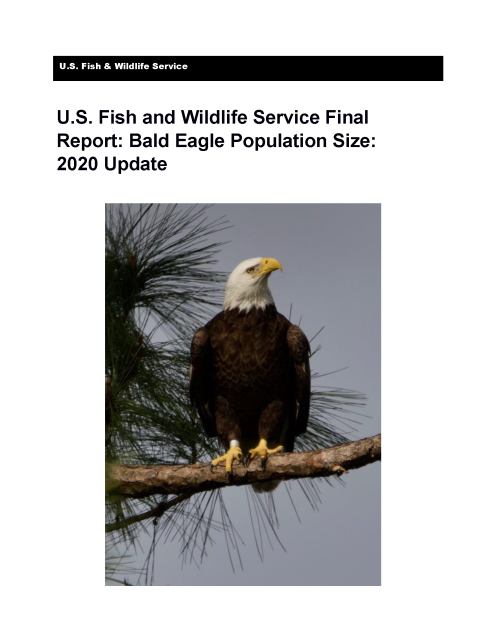Population Status
Understanding the populations of both bald eagles and golden eagles is the biological basis for the Service's regulatory management framework.
The Bald and Golden Eagle Protection Act explicitly identifies incidental take of eagles as a prohibited act, and the authorization of incidental take is one of the cases where permits may be issued. However, Congress specified that the Service’s authority to permit take requires a determination that the take is compatible with the preservation of the eagle species being taken. Thus, the Service has to make scientific determinations regarding the sustainability of any take of eagles that it authorizes. To do this, the Service needs to know the approximate status of both bald eagle and golden eagle populations. We therefore monitor the populations of bald and golden eagles, provide updated information on population size, productivity, and survival rates, and manage the effects of both authorized and unauthorized take on eagles.
2016 Population Status Report
The Service compiled information on the population status and trends of bald eagles and golden eagles up to 2016. The report, Bald and Golden Eagles: Population demographics and estimation of sustainable take in the United States, 2016 update, provides estimated population sizes, productivity, and survival rates. This information was used in the environmental analyses for the Service’s Programmatic Environmental Impact Statement, which was finalized in December 2016. In the Programmatic Environmental Impact Statement, the Service committed to updating population size estimates and take limits for both bald and golden eagles no less than once every six years.
Bald Eagle Population Update
The Bald Eagle Population Size Report: 2020 Update provides the most current population estimate of bald eagles in the lower 48 states. The bald eagle population climbed to an estimated 316,700 individual bald eagles, including 71,400 nesting pairs. This estimate indicates that the bald eagle population has quadrupled since the last set of data was collected in 2009.
This update of the bald eagle population allowed the Service to revise our estimates for sustainable take from the bald eagle population in certain Eagle Management Units and update our bald eagle take limits for permits we issue for incidental take of bald eagles in these Eagle Management Units. We published a report, Update of bald eagle take limits for the Atlantic, Central, Mississippi, and Northern Pacific Eagle Management Units, that details the new take limits and our methods for calculating them. This report is a technical update of the scientific information for bald eagles published in the Service’s Programmatic Environmental Impact Statement.
Get answers to frequently asked questions about the 2020 bald eagle population update and frequently asked questions about the updated bald eagle take limits.
You can also read our feature story on the new bald eagle population estimate.
Golden Eagle Population Update
The Service and our colleagues have regularly surveyed golden eagles since 2006. We look closely at the interior western United States as that area supports the majority of the golden eagle population. The last time the Service published the population status, it included data through 2014. The total population size for the golden eagle throughout the United States (including Alaska) in 2014 was estimated to be 40,000.
The newest population estimate, based on data through 2016, for the interior western U.S. golden eagle population is 31,800, very similar to the estimate in 2014. Given that the numbers for the interior western U.S. have remained the same, we believe that total population estimate is still about the same.
The updated population estimate was recently published in the scientific journal Ecological Applications.
Even though golden eagle populations appear stable, the current rate of golden eagle mortality raises concerns as to whether they can remain stable. Based on this most recent published research, human activities still account for the majority of golden eagle mortality (74% of deaths after their first year). This rate of human-caused mortality is likely at the upper extreme of the level of take that is sustainable. In addition, many juvenile eagles die from starvation during their first year.
The Service will continue to monitor golden eagle populations, paying close attention to any signs of population decline. In addition, the Service and many collaborators are carefully considering how to reduce the amount of human-caused mortality the species faces.










